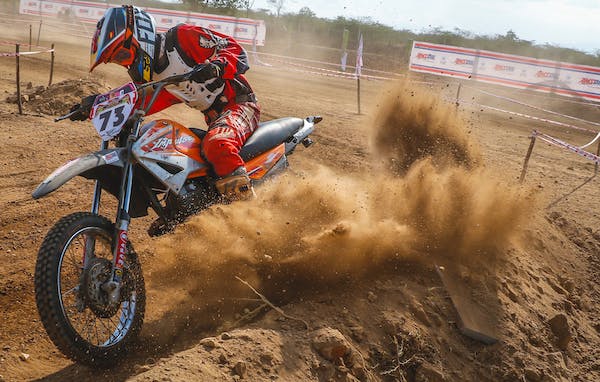California Dirt Bike Laws 2023
Image source: Pexels.com
You may be wondering what California’s legislation will be in 2023 if you enjoy riding dirt bikes. You must be informed of the laws and ordinances that are relevant to your off-road vehicle whether you plan to ride on public roads, trails, or private property. I’ll provide you with a rundown of the most significant dirt bike legislation in California for 2023 in this blog post, along with some advice on getting your dirt bike street legal.
Describe a dirt bike.
A two-wheeled off-road vehicle intended for use on unpaved terrain is called a dirt bike. In California, dirt bikes are also referred to as off-highway vehicles (OHVs) or recreational off-highway vehicles (ROVs). Motorcycles, on the other hand, are legal street cars that can be driven on public roadways.
Which laws apply to dirt bikes in California?
The Department of Motor Vehicles (DMV), the California Air Resources Board (CARB), and the California Vehicle Code (CVC) oversee the state’s regulations pertaining to dirt bikes. These are a few of the principal laws that you should be aware of:
Enrollment
A dirt bike identifying plate or sticker must be obtained and registered with the DMV. Every two years, you must renew your registration, which costs $52 for a two-year period. Use tax is another expense that you must pay; it is determined by the dirt bike’s purchase price. Online, by mail, or in person at a DMV office is how you may register your dirt bike.
Decals
Your dirt bike will either come with a green sticker or a red sticker, depending on the model year and emission requirements. In any State Vehicular Recreation Area (SVRA), a dirt bike with a green sticker indicates that it satisfies CARB emission regulations and is suitable for year-round use. If you see a red label on your dirt bike, it indicates that it doesn’t comply with CARB emission requirements and may only be used in specific SVRAs and seasons. The [California State Parks website] has a list of riding places and seasons with red stickers.
Authorization
In California, you cannot operate a dirt bike without a valid driver’s license or learner’s permit. If you are under eighteen (18), you must obtain your parent or guardian’s consent before completing a driver education and training programmed. It is also mandatory that you wear a helmet that complies with federal safety regulations.
Protection
Although it’s not necessary, liability insurance is advised for dirt bikes. When riding a dirt bike, you can cause injuries or damages to other people, and liability insurance can shield you from having to pay for any damages. Any California-licensed insurance provider offers liability insurance.
Security
In California, you must abide by the safety guidelines when riding a dirt bike. Among the safety guidelines are:
- Unless your dirt bike is street legal, do not ride it on sidewalks, public roads, motorways or bike lanes.
- It is forbidden to ride a dirt bike on someone else’s property without their consent.
- Unless specifically marked for off-highway vehicle use, never ride a dirt bike on federal, state, or wildlife areas.
Avoid operating a dirt bike while under the influence of drugs or alcohol.
Do not risk anyone else’s safety by riding your dirt bike carelessly. - Except in cases where it is made for two riders, never ride a dirt bike with a passenger.
- Avoid riding a dirt bike without a spark arrestor or silencer, or if you have an exhaust system modification that makes the machine noisier.
- Unless your dirt bike has a headlight and a taillight, you should not ride it at night.
How do you get your California dirt bike legal for the streets?
It must be street legal in California if you wish to ride your dirt bike on public roads. This implies that your dirt bike needs to be modified to comply with motorcycle equipment and emission regulations. Here are a few of the adjustments you must make:
- adding a headlight, taillight, brake light, turn signals, horn, and mirror that have all received DOT approval.
- installing the odometer, licence plate light, and speedometer.
- fitting suspension, brakes, and tyres that have received DOT approval.
- installing a conversion kit or engine that satisfies CARB certification and meets motorcycle emission regulations.
- passing both a DMV-approved safety inspection and a smog check at a service facility.
Once the changes are complete, you must go to the DMV to apply for a motorcycle license plate and registration. In addition, you must obtain motorcycle insurance and obtain a motorbike endorsement for your driver’s license. Visit the [DMV website] for additional details on how to get your dirt bike street legal in California.
In summary,
In California, riding a dirt bike may be a lot of fun, but you need be aware of the rules and restrictions that are specific to your off-road vehicle. It is required that you register your dirt bike, obtain a sticker, obtain a license, and abide by the safety regulations. Should you choose to ride your dirt bike on a public road,
You must modify it to comply with motorcycle regulations in order to make it street legal. You can ride your dirt bike with enjoyment and avoid legal issues by abiding by these laws.
I hope this blog post was useful and instructive for you. And please spread the word to your friends and other dirt bike fans about this piece if you enjoyed it. I’m grateful you read!





0